About Rimini
Rimini is probably the most famous seaside resort in Italy. Its miles of sandy beach along the Adriatic coast made the town a trendy destination in the 1960s and 1970s and its popularity has never waned, although it became rather less fashionable. Nowadays, to Italians, Rimini may still be chiefly known for its hordes of partying youngsters and sunbathing families. But the city has a lot more to offer and has spent several years developing its cultural and artistic offering, building on archaeological discoveries, handsome historic buildings and the region’s fine foodie traditions.
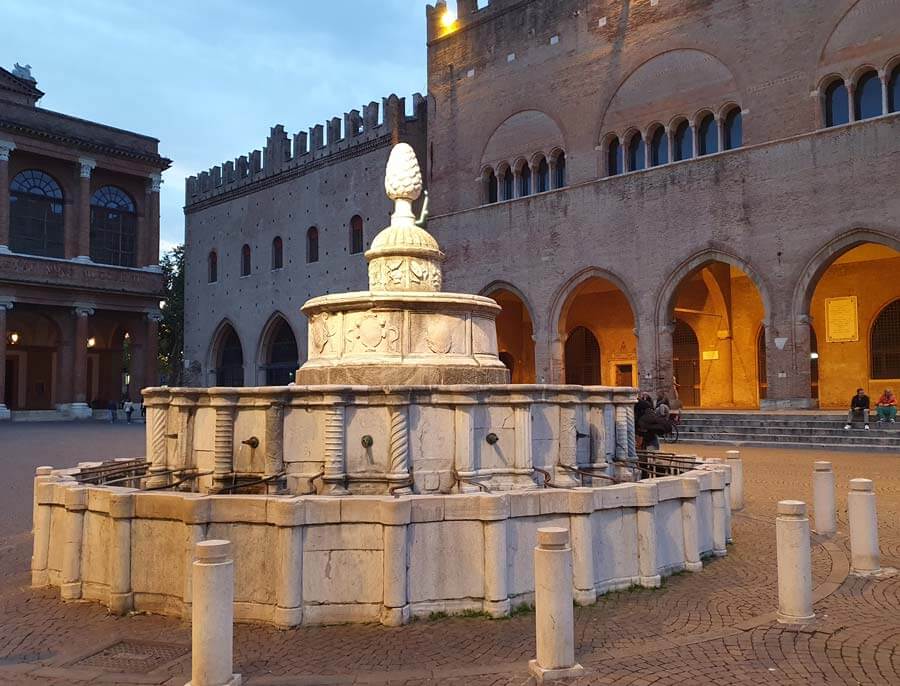
The beach certainly isn’t going to lose its following, but it is true that Rimini is now visited for more than its beaches and seaside attractions. And as well as having its own charms, the resort is also a good base for exploring some interesting sights, has direct budget flights in summer from the UK and offers very competitive hotel prices out of season. All in all, it is not a bad destination for a stylish weekend break, a budget taste of Italy or a varied family holiday – even if you visit in winter or simply hate beach culture, you will still find plenty to keep you busy and interested for several days.
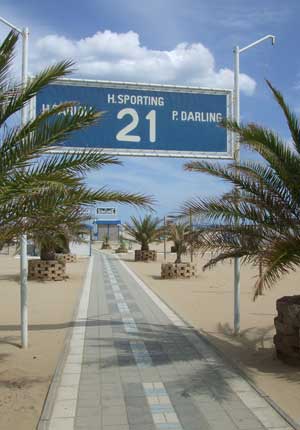
Rimini is a town of two parts. The original historic town is now located around a mile inland (the coastline has shifted in past centuries). Despite Second World War bombing which destroyed or damaged 90% of the town and its history, this is still a typical Italian town with historic lanes, palazzi, piazze and tourist sights. The ‘other’ Rimini is the long beachside sprawl which has grown up since the Second World War. It extends for miles along the sandy beaches, with hotels and modern apartment blocks lining the shore in a built-up strip several streets deep. This is undeniably monotonous and not picturesque, although there is no extreme high-rise development. The beach is divided into hundreds of private beach concessions where you pay for entry, sunbeds and parasols. Most hotels have their own private stretch of beach, or arrangements with one. You could stay in one Rimini and never visit the other, should you lack a taste for exploration. Here I’ll describe both parts of the town, and the different holiday and day trip possibilities for visitors.
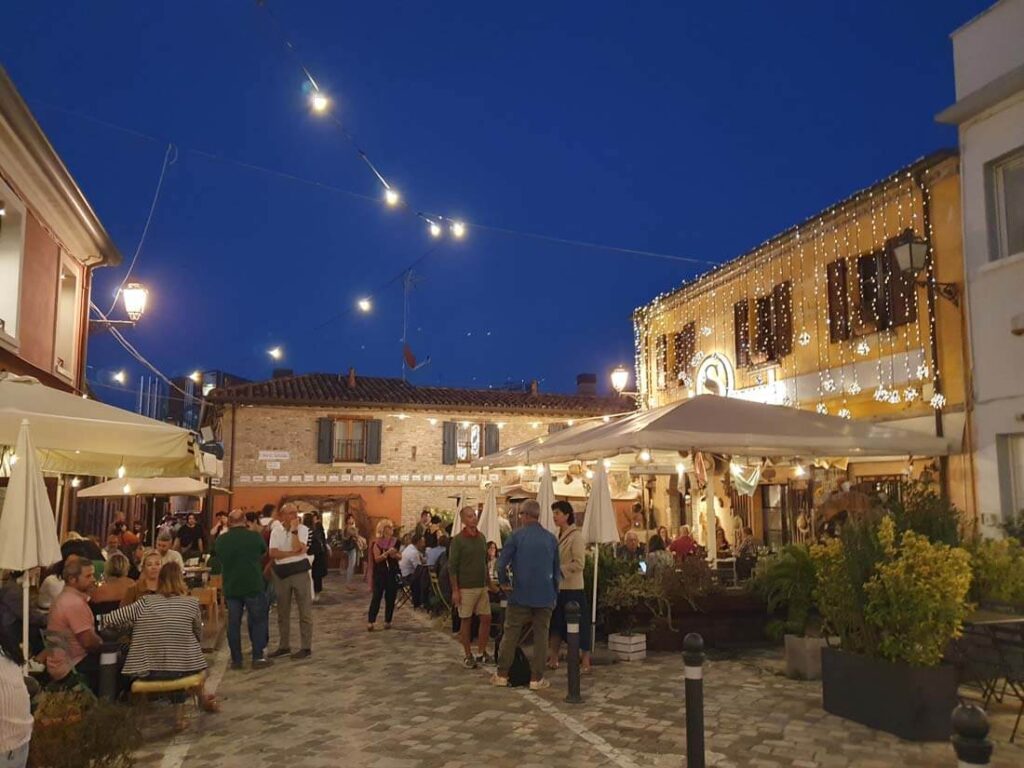
Rimini – the historic town and sights
Rimini’s centro storico, historic centre, is an old walled town which dates back to Roman times. Before the Romans, Rimini was the port for the nearby Etruscan-Villanovan town of Verrucchio. The Romans, who called it Ariminum after the local river, developed the town and it rose to some importance. The sea was much nearer town in those days, with the port close to the site of the modern railway line.
The most striking remains of Roman Rimini are a triumphal arch and a bridge, lying at either end of a straight road which traverses the town centre, about ten minutes’ walk apart. The Arco d’Augusto (Arch of Augustus) was built in 27 BC to honour Augustus. It’s battered now but still bears portrait carvings and parts of its central inscription. At the other side of the town centre is the Ponte di Tiberio (Bridge of Tiberius), a bridge which was constructed during the reigns of the Emperors Augustus and Tiberius. The Roman bridge is constructed of white Istrian stone, has five arches, and remarkably traffic is still permitted to rumble across it. It has been repaired and patched several times; the river it crossed has changed course but it still stands there as an elegant testament to the town’s past.
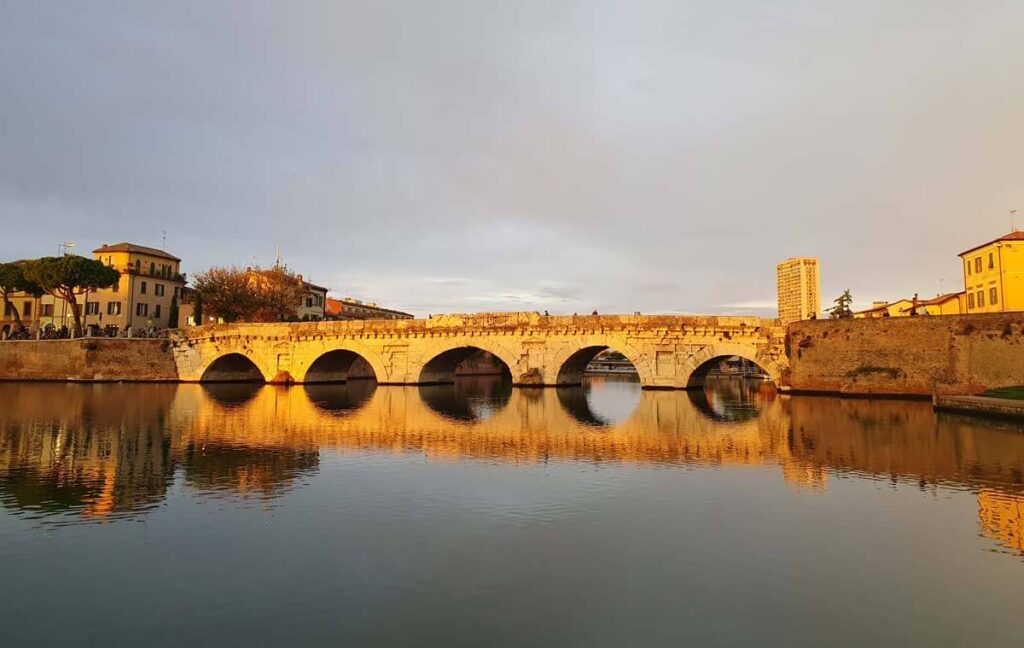
The layout of town hasn’t changed a great deal since the Roman era. The Roman forum would have stood where Piazza Tre Martiri still fills up with bustling locals. This is where Caesar, after crossing the nearby Rubicon, is said to have addressed his soldiers before marching on Rome. There is a statue commemorating this event at one end of the square. Bits of Roman road and stonework have been uncovered at various spots in town, with the remains of a theatre off Via Tempio Malatestiano and part of the Roman amphitheatre next to Via Roma. There is not much to see in either place, though.
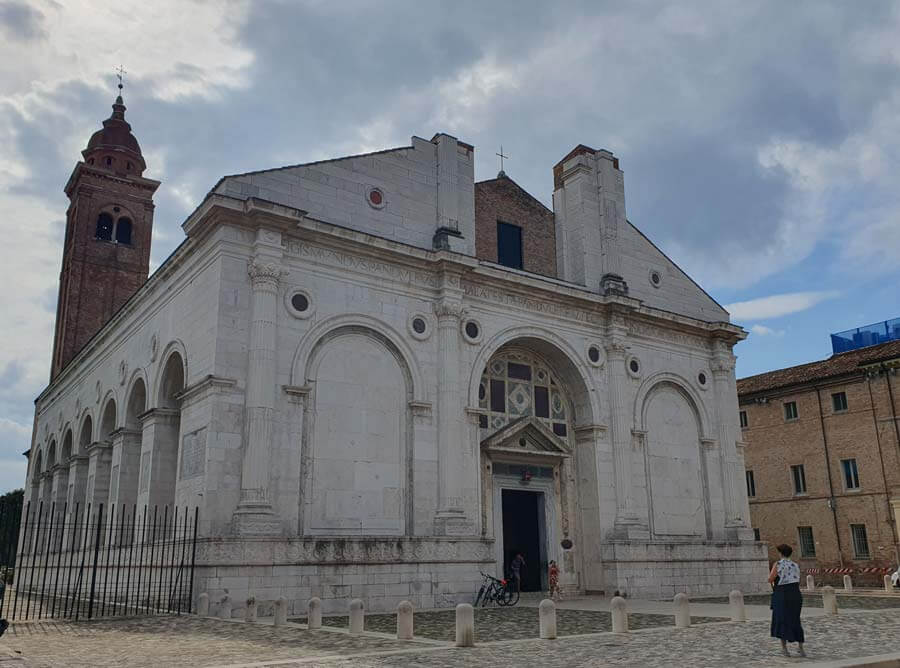
A truly great archaeological find was made in 1989 under some public gardens in Piazza Ferrari. Excavations exposed walls, floors and graves from various eras, including the town’s new great pride: the so-called Surgeon’s House. This is a dwelling from the second or third century AD which obviously belonged to a well-off and presumably skilled doctor, who had a large collection of specialised surgical tools. The building was destroyed in a fire, probably during raids by Germanic tribes, leaving mosaic floors, decorations and the doctor’s equipment preserved. The mosaic floors and walls from the surgeon’s house and an adjacent, later villa are on display in a modern building in Piazza Ferrari, which opened in 2007. The ruins visible include those of later buildings on the site, and the fascinating sight of medieval burials interred on and under mosaics . Glass walkways mean you can get a good look at what’s under your feet.
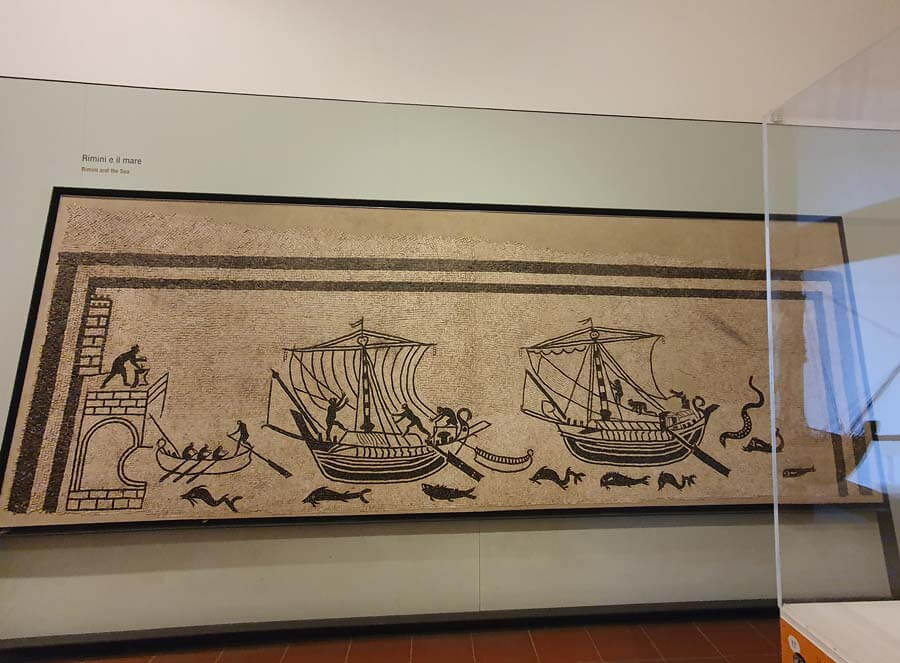
Close to the Roman ruins and visited on a joint ticket is the town museum, the Museo della Città. This has a good archaeological section with finds from the surgeon’s house including a lovely glass fish-decorated wall panel. The museum has also created reconstructions of two rooms where this gentleman surgeon would have seen patients: you can walk in to feel history brought to life. Upstairs is Rimini’s art gallery, which contains many works by local artists or from local churches and houses. One of the highlights is a painting by Giovanni Bellini of Christ supported by angels. Some interesting old views and plans show how Rimini has grown and changed in the last few decades. There is also a collection of self-portraits by local artists, including some marvellously decadent attitudes from the 1930s.
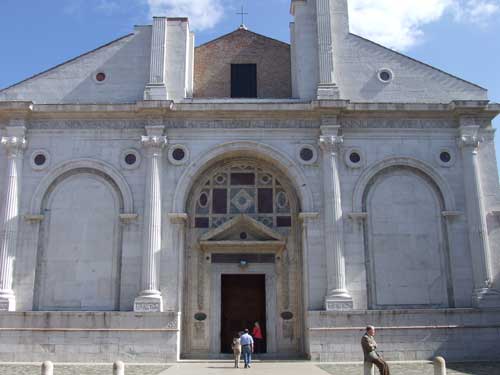
After the Romans, Rimini’s next period of glory came in the late Middle Ages and the Renaissance, when the town was the seat of the powerful Malatesta family. The most significant of these rulers was Sigismondo Pandolfo Malatesta. When he wasn’t waging war, he commissioned some of the fine art and architecture which still ornaments Rimini. The greatest of his creations was the so-called Tempio Malatestiano (Malatesta Temple), designed by Leon Battista Alberti. Although it is in fact a church, not a temple, it was hugely significant for Renaissance architecture in its adoption of classical forms. The interior is wonderfully decorated with sculptures by Agostino di Duccio and many tributes to the Malatesta family including a fresco by Piero della Francesca of Sigismondo before the saint of the same name; Sigismondo’s initial S entwined with I for his wife Isotta; the elephants that were family emblems. The building was never completely finished as Sigismondo’s fortunes waned. The irreligiousness of the ‘temple’ was among the excuses of the Pope for excommunicating him. The building is closed during religous services so visit as soon as you can in order not to be disappointed. At the town museum I found a great free pamplet in English produced by the tourist board, examining the Tempio Malatestiano in depth.
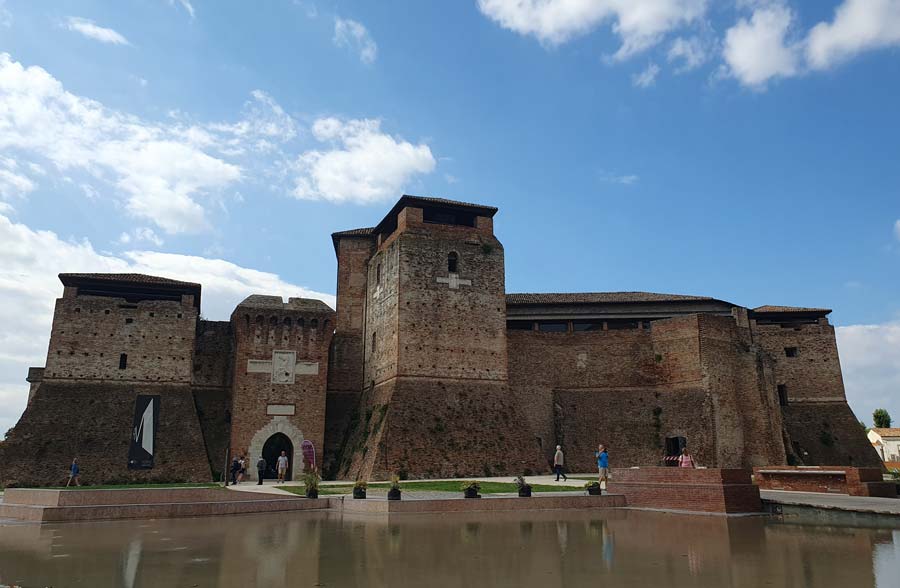
The fortress of the Malatesta dynasty, the Castel Sismondo, or Castello Malatestiano, sits on the edge of the town centre. The high-walled building is quite bare, but some of its rooms are used for temporary exhibitions.
Other cultural destinations in Rimini include a museum dedicated to Federico Fellini, in the house which was his sister’s home. The film director was born in Rimini, and is buried in the cemetery here. His early semi-autobiographical film I Vitelloni, though filmed elsewhere, gives a glimpse of what small-town Rimini life was like when the director was growing up. Rimini also has lots of the usual seaside attractions – but for these you should read on about the ‘other’ Rimini, the seaside town.
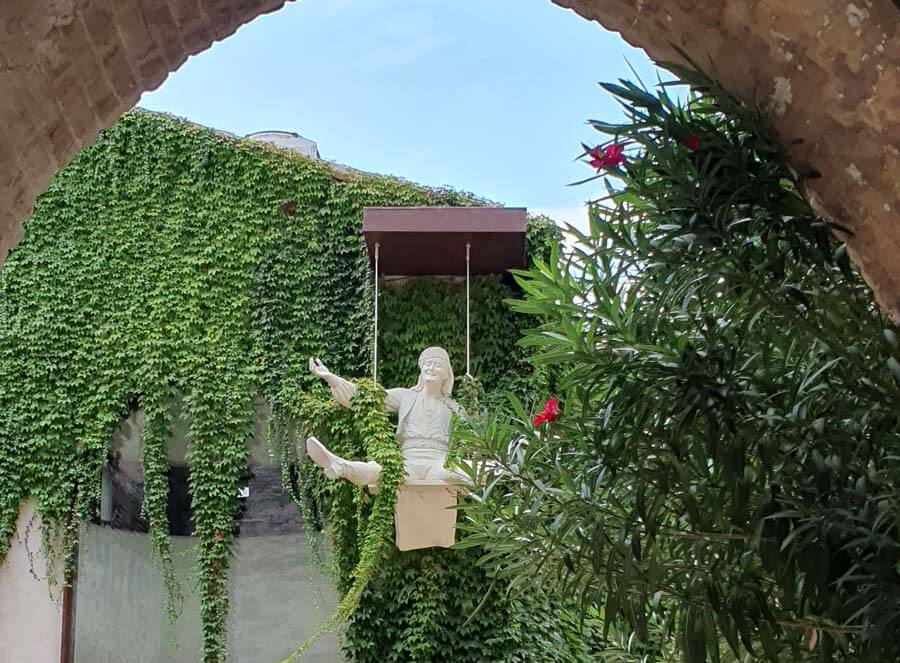
Still in the historic centre, the most interesting piazza is probably the one now named Piazza Cavour. It’s a medieval square, and the fountain here is one of the town’s most significant historic features, praised by Leonardo da Vinci and recorded in Renaissance art as well as a film by Fellini (Amarcord). The principal buildings in the piazza are the Palazzo dell’Arengo, built in the thirteenth century and the Palazzo del Podestà. The buildings were restored after an earthquake in 1916 . The old fish market by the fountain, where the stone slabs are now often topped by flowers or socialising locals, is now one of the hubs of old Rimini – read on to the food and drink section below to learn more.
You can easily spend a half-hour or more pottering around Rimini’s lanes and shops. There are some interesting boutiques selling clothes, shoes and designer goods as well as typical Italian high-street stores. It is generally much classier than the cheap clothes and souvenir shops by the seaside. There are plenty of cafes to rest at and watch the world go by, principally around the two main squares, Piazza Tre Martiri and Piazza Cavour.
Rimini – the beach resort
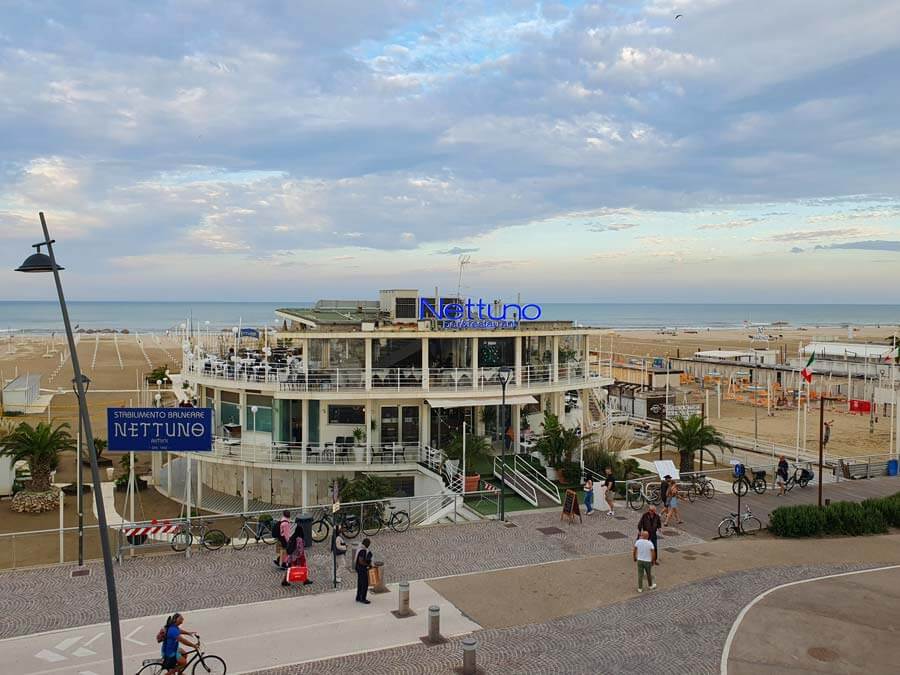
If you are visiting Rimini purely for a beach holiday, you need never leave the sand. All along the beach are private beach concessions where you can hire sunbeds and parasols, eat at cafes, bars and restaurants and watch your children have fun on the play equipment. The Italians have made beach life very comfortable and orderly. For much of the resort’s length there are two busy traffic-filled streets, one running along the back of the beach, the other a block inland. Rimini’s hundreds of hotels are mostly located on these two streets, or on little side-streets branching off them. Buses run along the length of the resort, and the streets are fairly featureless and unchanging; a procession of restaurants, snack bars, drinking bars, night-time bars and cheap clothes shops. Personally I missed being able to walk along a promenade and admire the sea; the seaside road is busy and it is lined with the entrances to private beaches, blocking any views. The best place for strolling is by the mouth of the river and port, level with the old town. Here you can actually walk out along a jetty where old men fish and which affords good views along the built-up coastline and towards the distant southern headland which gives interest to the scenery.
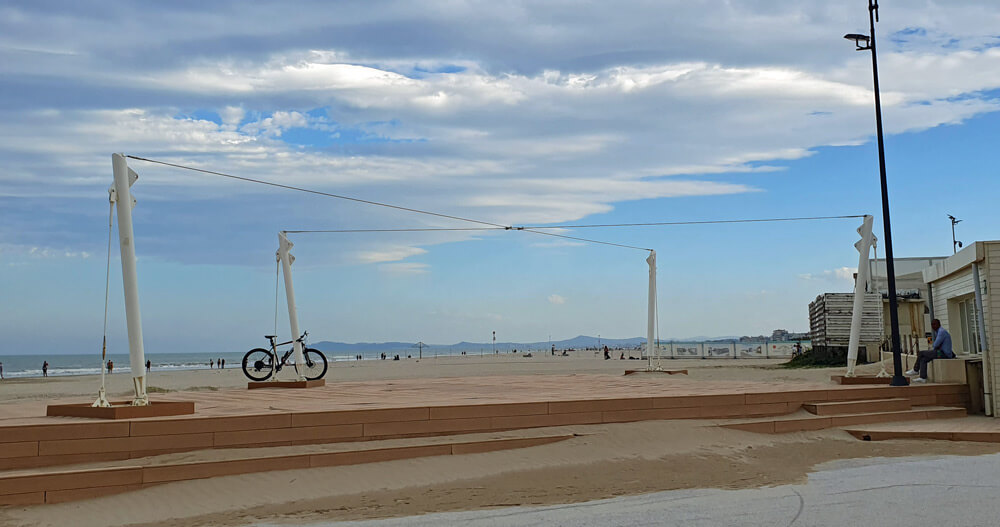
As well as the attractions of the sandy beach and the safe shallow waters, Rimini also has its full share of other seaside attractions for adults, teenagers and children. There are amusement arcades, bicycles to hire, mini-golf (near the lighthouse) and a dolphinarium (Delfinario). I caught the bus to Italia in Miniatura, an old fashioned theme park built around ‘Italy in Miniature’, which comprises lots of small models of Italian landmarks and a boat ride through Venice ‘at one-fifth its actual size’ (I loved it).
And this being Italy, there is lots and lots of food throughout the town.
Practicalities, food and drink
As described further down this page, local bus services are a good way to cut down on boring walks through seaside Rimini. Once you have got a map you’ll be able to find your bearings along the long unchanging streets; the bus-stop numbering helps, too. When you are booking your hotel, check its location on the maps provided on the online booking sites to get an idea of how far you will be from the railway station and the old town. If you are planning travel or sightseeing it makes sense to be fairly near these, perhaps in the Marina Centro area which is the nearest seaside to the old town.
Although Rimini isn’t renowned for its cuisine or restaurants, there are plenty of perfectly decent places to eat varied meals, from pizzas to seafood, as well as take-aways and bars serving piadine – local heated flat-bread sandwiches. By the seaside I ate at Chi Burdlaz ‘Garden Bar’ (Viale Vespucci, 63) – which was over-hectic but served good pizzas, pasta and meat dishes and was ruled over by a real character. There is a cluster of popular eating places on Via Becadelli, where the street from the town centre reaches the seafront area. These include the stylish white-decor Ex-Dancing, which offers pizzas, salads and piadine at outdoors tables in the sun. Along the street from the railway station, next to the pedestrian underpass on the route to the sea, is a chain pizzeria, Zio Ciro (Piazzale Battini, 21), which has outdoors tables under trees (albeit squeezed between road and railway line) and serves reliable food at reasonable prices.
The evening hub of the old town is the old fish market, the Pescheria, where there is a cluster of bars and young people (and not-so-young) can perch on the old stone market-slabs with their wine glasses.
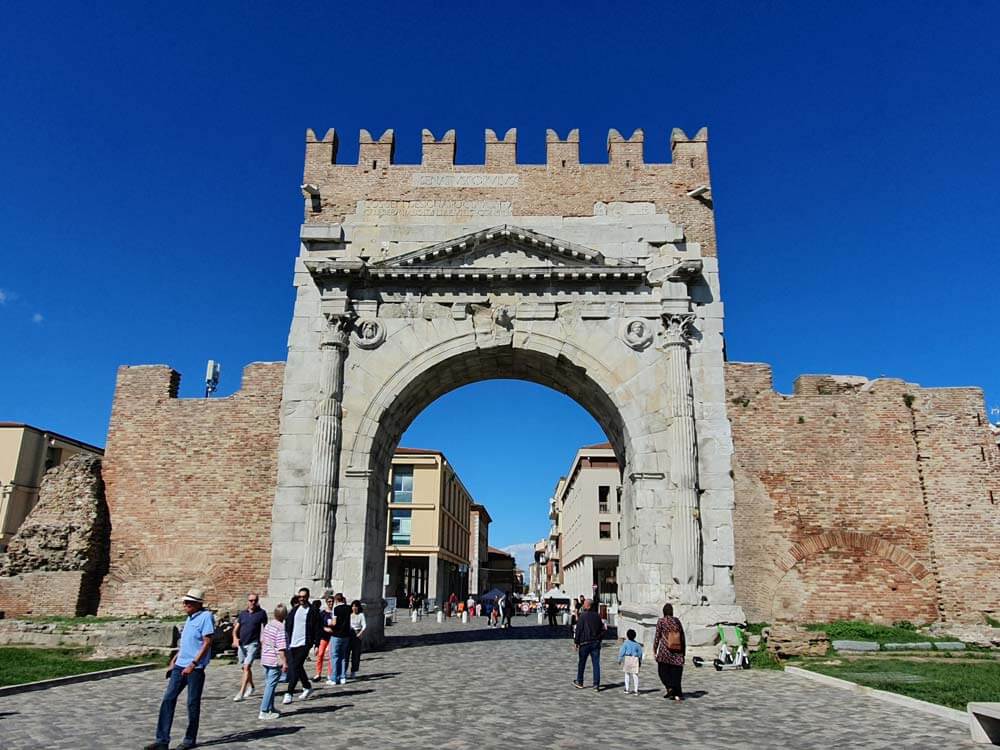
Around Rimini
The Emilia-Romagna region has several historic towns which make interesting day trips within reach of Rimini. Ravenna, Ferrara and Bologna all have lots of art, architecture and sights to enjoy as well as attractive squares where you can sit and enjoy a very different atmosphere to Rimini – or to seaside Rimini, anyway. Rimini is well-placed for exploring this stretch of the Adriatic Coast, and I found it a good base for a varied holiday. As well as the other purpose-built beach resorts, travellers can head south into the region of Le Marche, where there are still more villages and hills to explore. I visited seaside Pesaro (half an hour away by train) and famous Urbino in a combined day trip, since the bus for Urbino leaves from Pesaro. For comfortable exploring I’d allow a day each for the towns, though.
Rimini is also the best base for visiting the independent Republic of San Marino: a bus service runs throughout the day between the two towns; the journey takes 45 minutes. In the summer holiday season there are additional bus services designed for day-trippers: for example to the historic castle and town of San Leo, and a direct service to Urbino. Other nearby towns can be visited using normal public bus services, including Verucchio, which has an important archaeological museum. The tourist information office in Rimini produces interesting leaflets and even books in English detailing sights in the surrounding province; it’s a good first stop for planning your travels. Naturally they also stock pamphlets advertising all those attractions designed for summer trippers and families, of which there are many in the area: theme parks, water parks and so on.
Rimini travel & transport
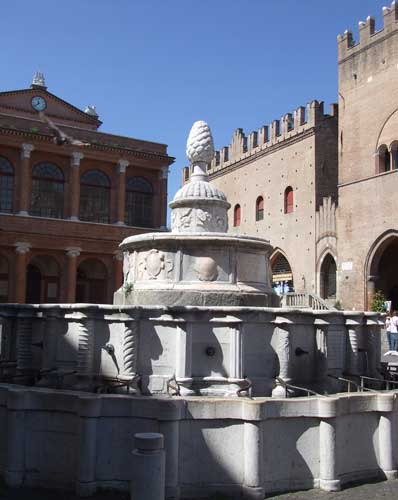
Rimini has its own airport, the Aeroporto Internazionale Federico Fellinio di Rimini-San Marino. Both Ryanair and Easyjet operate budget flights to the airport from the UK. It is only just outside the centre of town at Miramare, one of the stretches of seaside suburb. It has a tourist information office, and an urban bus service, the number 9, connects the airport with Rimini railway station.
Rimini is on a railway line which links Bologna with Ancona, further down the Adriatic coast. A good number of trains stop here; connections with other major Italian destinations are generally via Bologna. If you are planning a journey to or from Rimini by train, be aware that different categories of train stop here; some are faster but cost a lot more than others. You will need to buy the right ticket for the particular train you plan to catch. As well as the main Rimini station, some trains also stop at little stations further along Rimini’s built-up coastline, at Rimini Miramare and at Riccione.
The other seaside resorts nearby are on the same railway line, making it easy to visit the rest of the coast. Buses also serve the surrounding area; urban buses run the length of the built-up area as far south as Riccione, and other services head into the inland region. There are several buses a day running to the Republic of San Marino, a 45-minute trip, and in summer there are also direct buses to other towns of interest like San Leo and Urbino. Out of season you will need to rely on regular public transport. To reach Urbino, take a train to Pesaro and then catch a bus outside the railway station.
Within Rimini, bus services are run by a company called AM. There is a ticket and information kiosk outside the railway station. Services are efficient and tickets are cheap. Within the historic centre it is easy to get around on foot, but the seaside areas spread a long way, and are quite boring to walk through, so hopping on a bus is often a good option. Stops are labelled with numbers which is very helpful for travellers. A town map available from the tourist office shows bus routes and stops. It is generally worth buying a bus ticket covering multiple days if you’ll be in town a while.
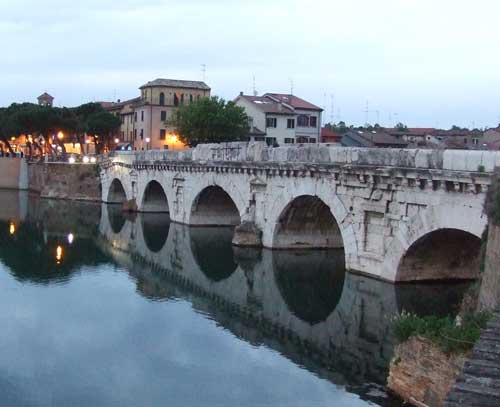
Accommodation
There are literally hundreds of hotels in Rimini, of every category and quality. I’ve stayed in two contrasting but good hotels – but do check the most recent reviews before you book:
> Duomo Hotel – a four-star ‘design hotel’ in the heart of the old town ideal for a stylish stay where you can ignore the beach if you wish.
> Ambienthotel Peru – a three-star which is more traditional but with stylish aspirations (some rooms only) and ahead of most Italian hotels with its excellent and friendly service.
> Rimini hotels, B&Bs and apartments
Emilia-Romagna destinations
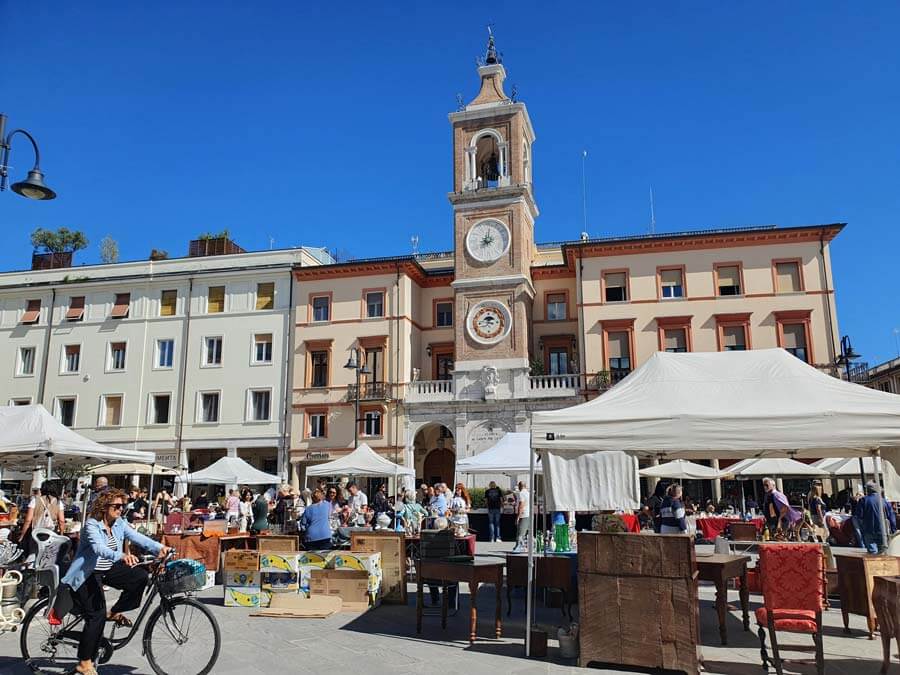
On this site
Useful external links
Fondazione Fellini (in Italian)
